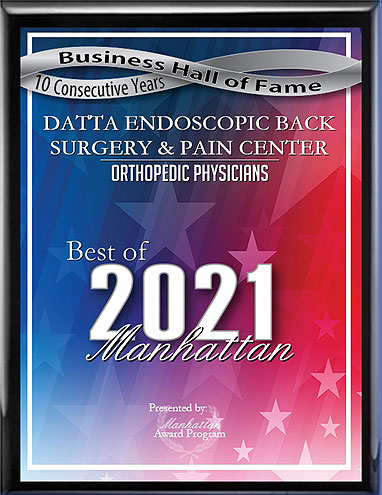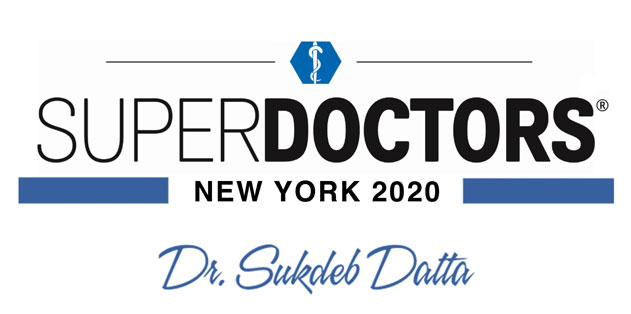Cervical spinal stenosis occurs when the spinal canal, through which the spinal cord passes, becomes narrower than usual in the neck. When the spinal canal narrows, the nerve roots or spinal cord may be compressed, causing symptoms. Spinal stenosis can be caused by a number of conditions, and can vary significantly in terms of severity. Depending on the nature of a person's cervical spinal stenosis, a number of treatments may be appropriate.
Causes
Cervical spinal stenosis typically develops as a result of some damage to the vertebrae or the spinal discs. It can occur either as an acute injury, or as a degenerative condition that develops over time. Potential causes include:
- Bulging discs - Bulging discs occur when one of the discs becomes misshapen without rupturing.
- Herniated discs - Occur when a disc ruptures, allowing the gel-like inner material to come outside of the disc.
- Vertebral fractures - Typically occur due to trauma, as can happen during a fall or an accident.
- Bone spurs - Abnormal growths of bone on the vertebrae.
- Spinal tumors - A relatively rare condition in which a mass, either benign or cancerous, grows on the spine.
Certain people are at an increased risk of developing some spinal conditions. For example, obese people, pregnant women, older people, and people with physically strenuous jobs are more likely to develop herniated or bulging discs. If you are at an elevated risk of developing spine problems, you should be especially conscientious about preventing spine injury and improving spine health whenever possible.
Symptoms
The cervical spine contains nerves that run to nearly every part of the body, including the arms, legs, and pelvis. As a result, cervical spinal stenosis can cause symptoms in multiple parts of the body depending on the nature of the condition. Symptoms include:
- Neck or shoulder pain
- Arm or leg pain
- Muscle weakness in the shoulder, arm, or leg
- Numbness or tingling in the shoulder, arm, or leg
The symptoms of the different forms of spinal stenosis tend to be indistinguishable due to the fact that they all have the ultimate effect of compressing nerves. Therefore, your doctor will need to use physical examination, a medical history, and medical imaging to determine the exact cause of your condition.
Unlike spinal stenosis in the lower back, cervical spinal stenosis has the potential to cause severe problems, including paralysis, in rare cases. Even in less severe cases, untreated pain causes unneeded suffering, reducing your quality of life and making you less able to participate in work, family life, and social life. Therefore, getting treatment is essential. You should see a doctor if you experience pain for longer than a few days. In addition, you should see a doctor if your symptoms are severe or getting progressively worse.
Non-Surgical Treatments
In many cases, cervical spinal stenosis can be relieved without surgery. Non-surgical methods typically do not alter the underlying cause of the stenosis, but instead reduce inflammation and improve spinal alignment, which in turn can relieve symptoms. Even in cases where surgery is required, non-surgical treatments will typically be used as well. Potential treatments include:
- Non-steroidal anti-inflammatory drugs (NSAIDs) - Medications like ibuprofen and naproxen sodium can reduce inflammation in the spine, relieving symptoms.
- Steroid injections - Steroid injections directly into the spine provide more powerful inflammation, because they allow for the administration of higher doses than could be taken orally.
- Physical therapy - Physical therapy can improve spinal alignment, reduce inflammation, and improve strength and flexibility, thus relieving symptoms. Physical therapy may also be used for rehabilitation after surgery, especially if muscle weakness was present.
- Chiropractic treatment - Chiropractic treatment, when used in conjunction with traditional medical treatments, can improve spinal alignment and reduce inflammation.
Surgical Treatments
The majority of conditions that cause cervical spinal stenosis can now be treated using minimally invasive procedures. Only severe or rare conditions, such as spinal tumors, typically require more traditional, open spine surgery.
Minimally invasive surgical treatments are preferred whenever possible, because they are associated with a lower risk of side effects, a shorter recovery time, and better outcomes. Laser spine surgery, stem cell therapy, and nerve stimulation are just a few of the cutting-edge options now available to patients. To get the best treatment possible, patients should be careful to choose a doctor who offers a range of minimally invasive spine treatments.
The exact recovery time associated with minimally invasive spine surgery depends on the procedure used. However, most people take only minimal time away from work and other normal activities, and no hospital stay is required in most cases. For example, laser spine surgery patients return home the same day. Within a week, most patients return to work at a desk job and can go about most day-to-day activities. Within 6 weeks most patients make a full recovery and can resume physically strenuous activities. In contrast, open spine surgery is associated with several months of recovery time.
Spinal Health Promotion
If you have ever experienced a spinal condition, it is especially important to make lifestyle changes that will promote your spinal health. For example, be sure to always use proper lifting technique, especially if you work a physically strenuous job. Regular exercise, weight loss, and smoking cessation can also help reduce the risk of future flare-ups and the development of further problems.
Your Consultation
Only a doctor can determine what treatment is right for your cervical spinal stenosis. At your consultation with Dr. Sukdeb Datta of the Datta Endoscopic Back Surgery and Pain Center, Dr. Datta will begin by asking you about your current symptoms and your medical history. Next, he will perform a physical examination of your neck and any other relevant parts of the body. Finally, he will order imaging testing of the spine to confirm the diagnosis. Based on all of this information, Dr. Datta will formulate an individualized plan of treatment to address your symptoms and the underlying condition.
To schedule your consultation with NYC's top cervical spinal stenosis doctor, please click below and enter your information or call the Datta Endoscopic Back Surgery and Pain Center at (212) 430-0312.






 EDISCSCULPT
EDISCSCULPT



